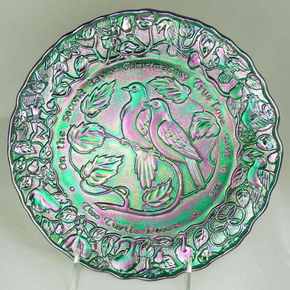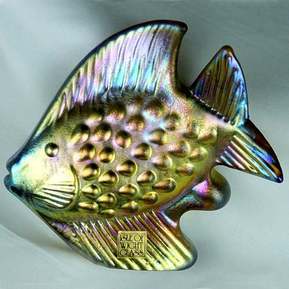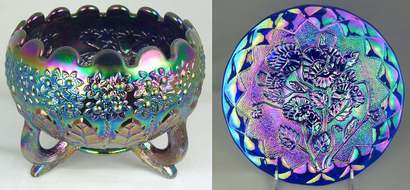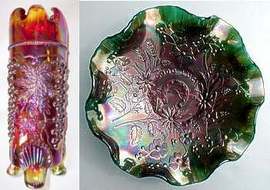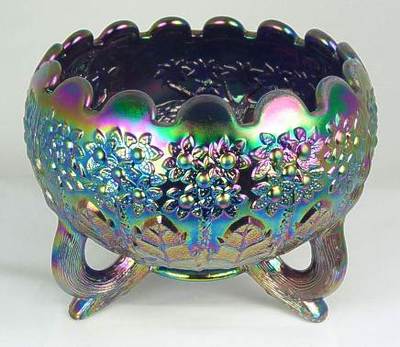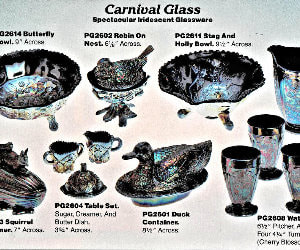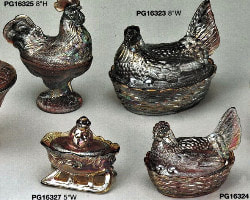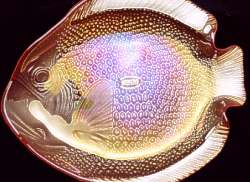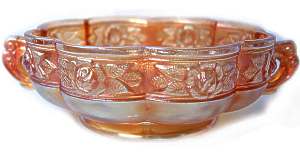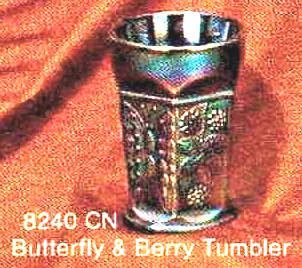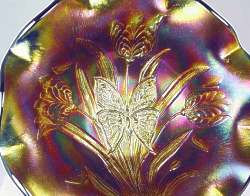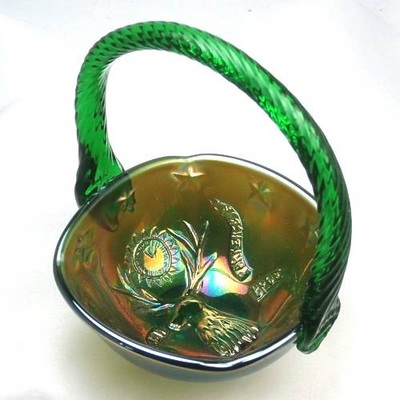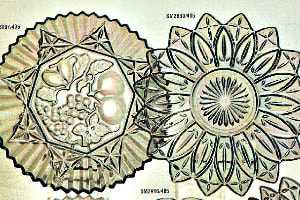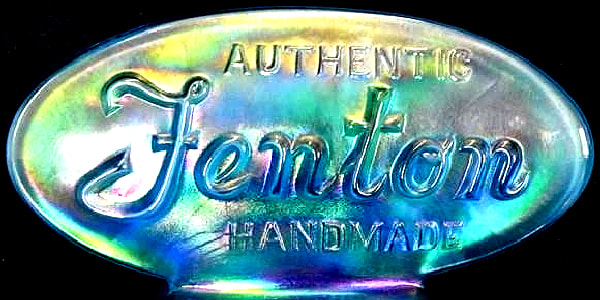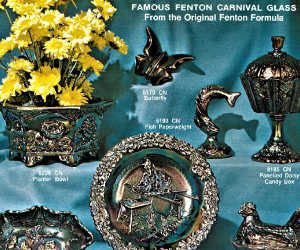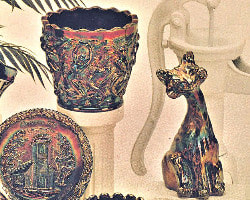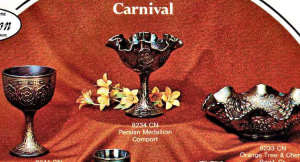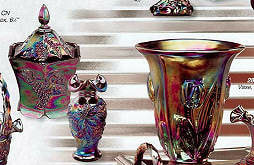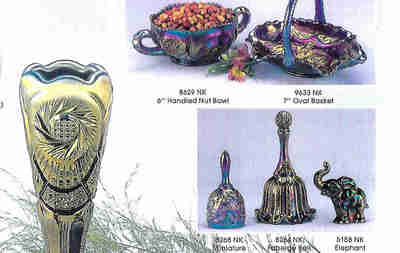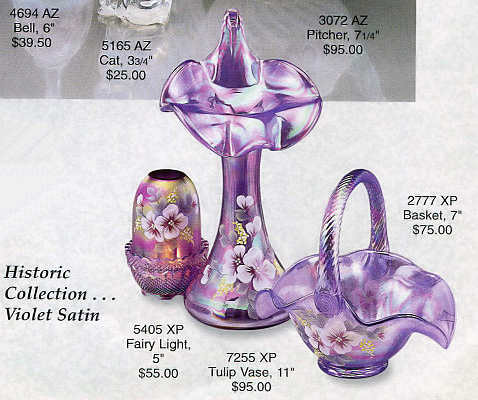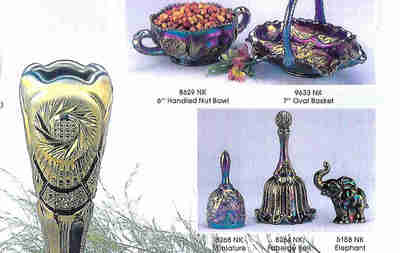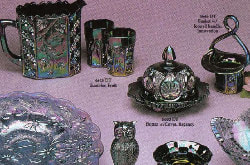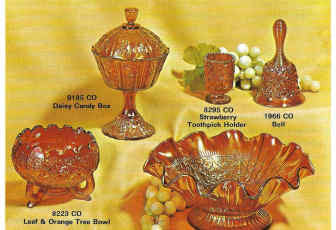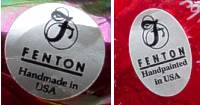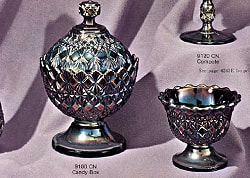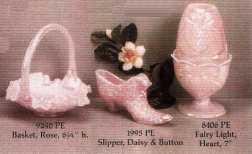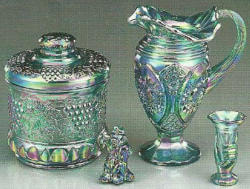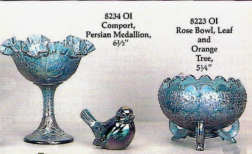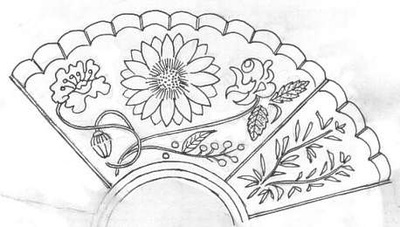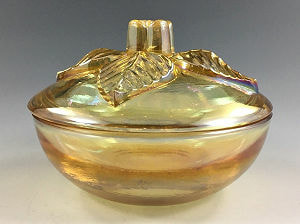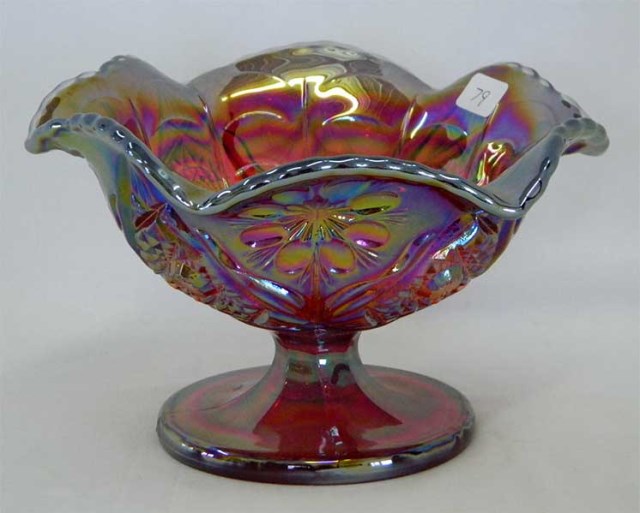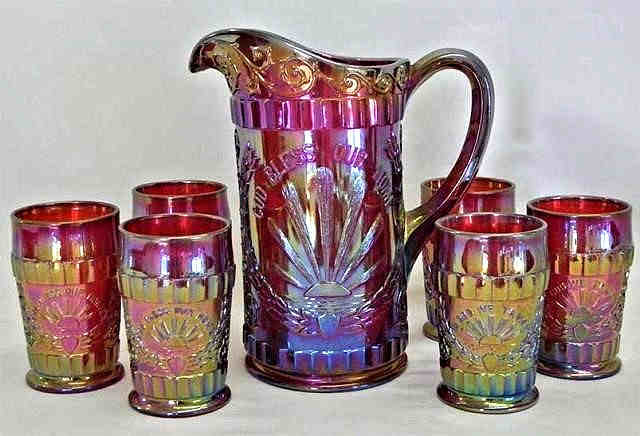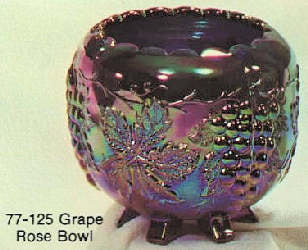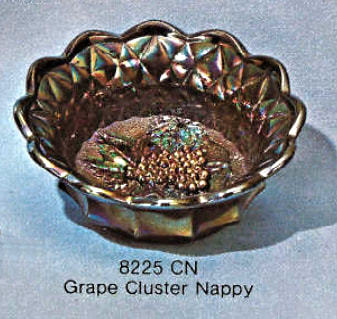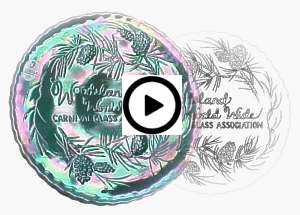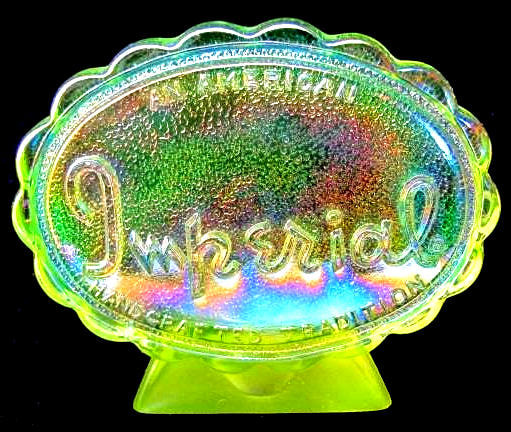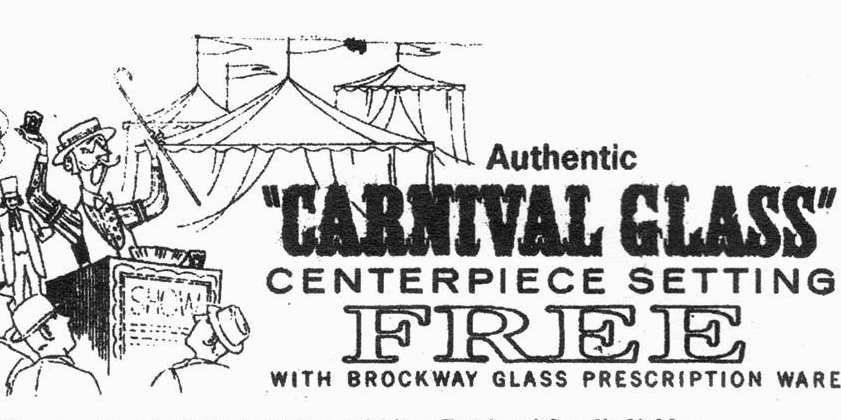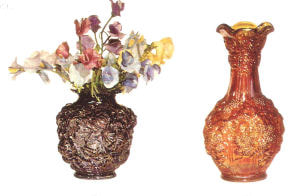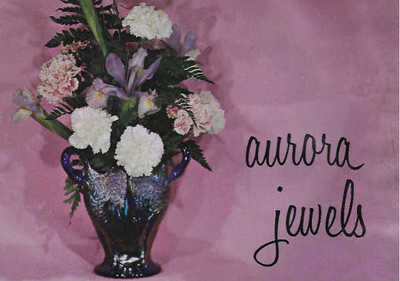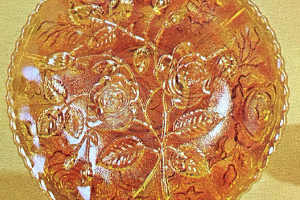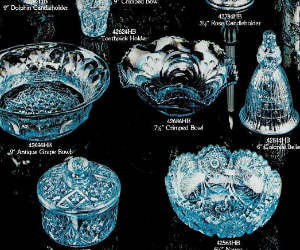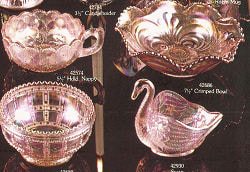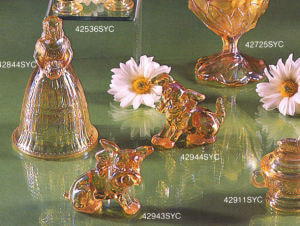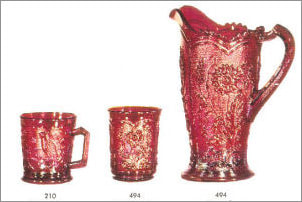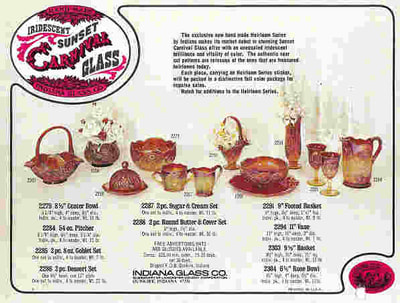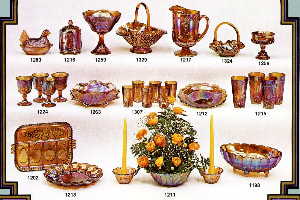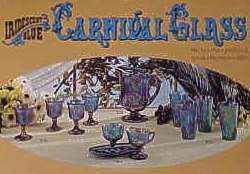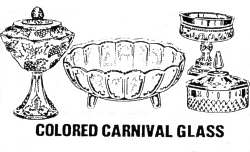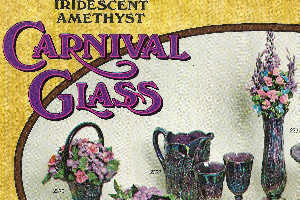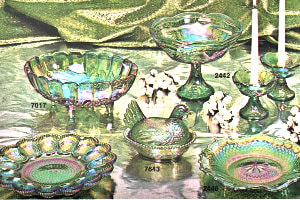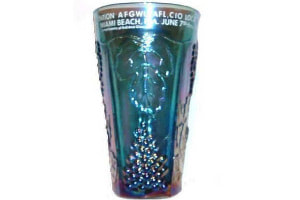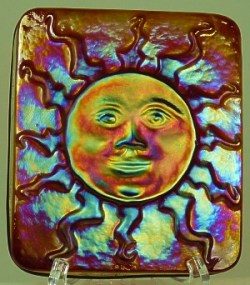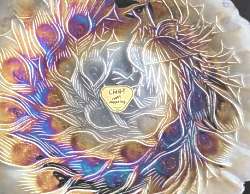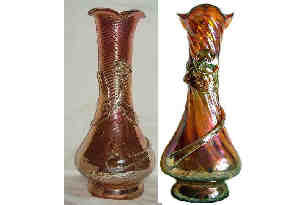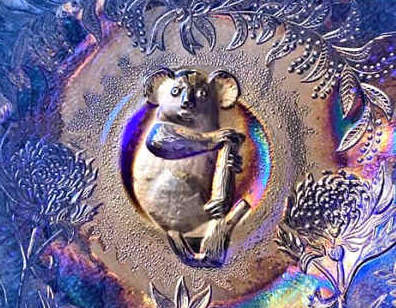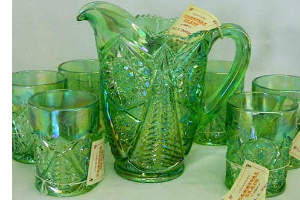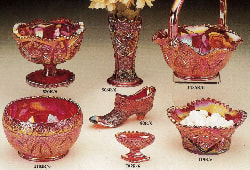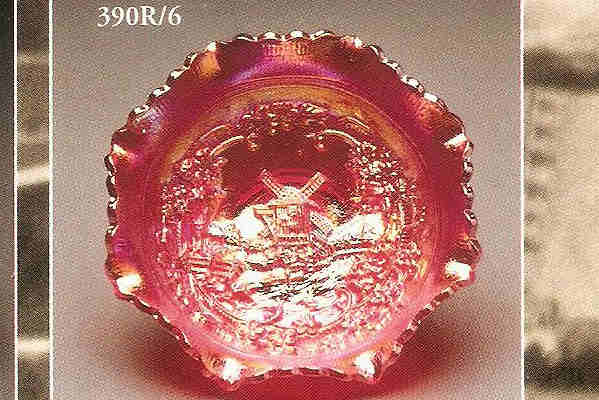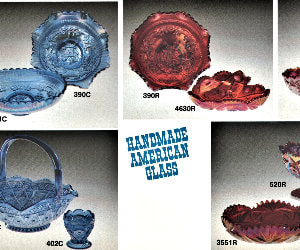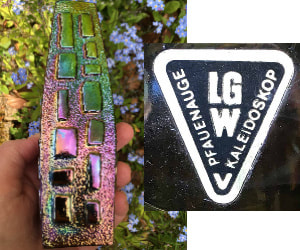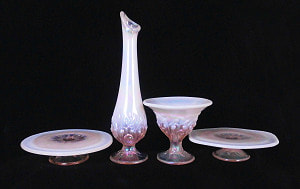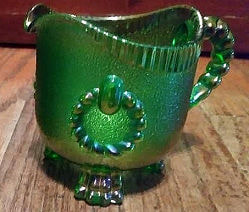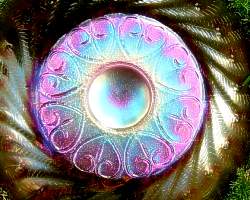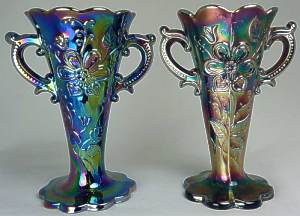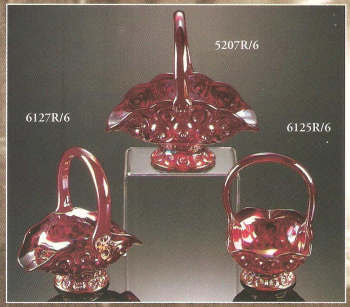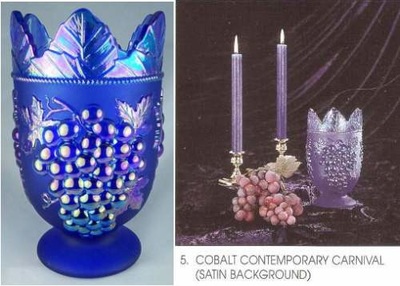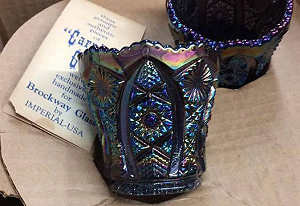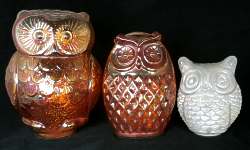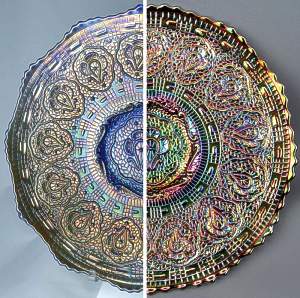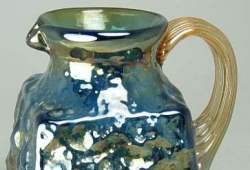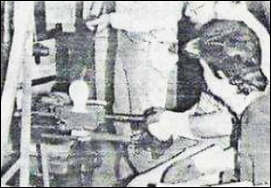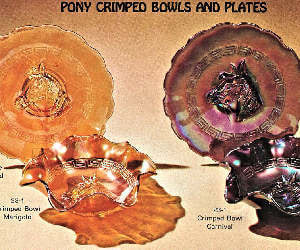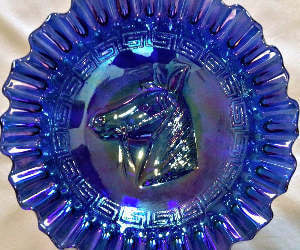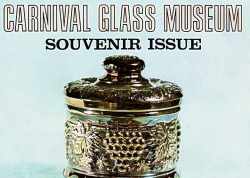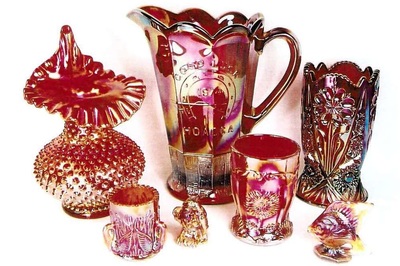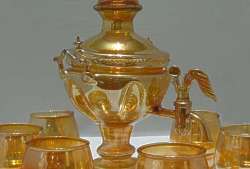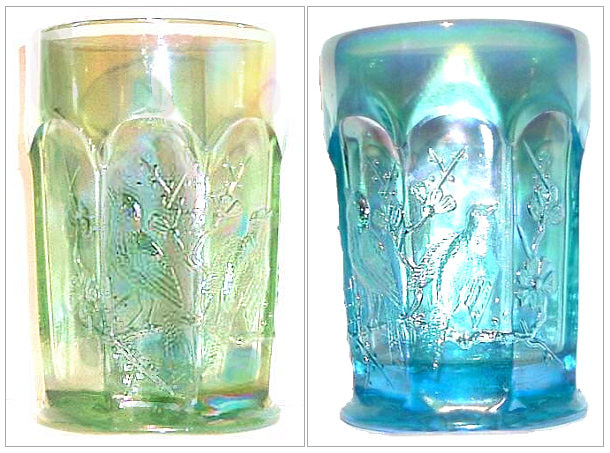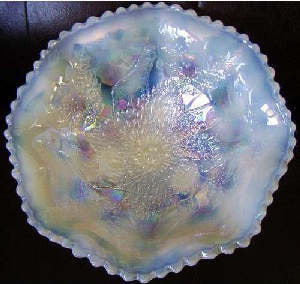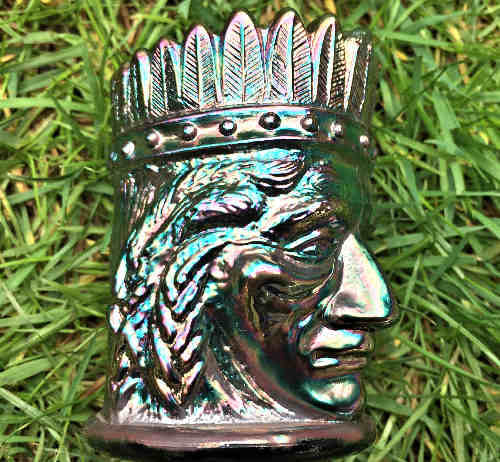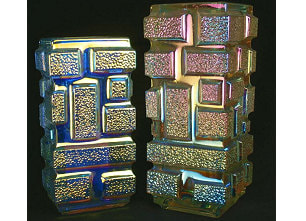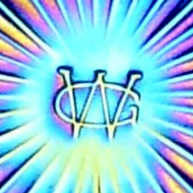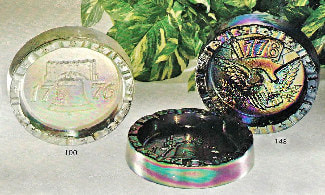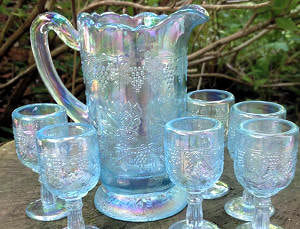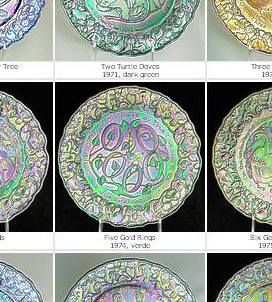Revival / Contemporary Carnival Glass
From the 1950s, Classic Carnival Glass began to acquire its own identity, thanks to several early pioneers and Carnival Glass collectors / writers / researchers like May Plummer, Gertrude Conboy, Marion Hartung, Rose Presznick, Don Moore and Sherman Hand. In fact, it was Gertrude Conboy who first used the term “Carnival Glass” in 1952, in an authoritative article about Carnival Glass appeared in the “Spinning Wheel” magazine. The title of the article was “The Glass of Many Names Now Known as Carnival”, and it firmly established the name "Carnival Glass" as the definitive term used by collectors worldwide.
At around the same time, several glass manufacturers realised there was a niche in the market for new, contemporary versions of the old, Classic Carnival. The Imperial Glass Company in Ohio and Joe St. Clair in Ellwood, Indiana were two of the first manufacturers to introduce new Carnival Glass, as a collectible, to their line in the 1960s. Other glass manufacturers soon joined in. Boyd, Indiana Glass, Mosser, L.E. Smith, Summit, Westmoreland, Viking, and more.
A club devoted entirely to new contemporary Carnival Glass was established in 1975 - Carnival Glass Encore, the inspiration of Dorothy Taylor. It grew and thrived, inspiring a generation of collectors to seek out and acquire the new Carnival Glass. More recently, in 1998, the Northwood name was revived by the (short-lived) Northwood Art Glass Company.
Although the glass companies revived old moulds (many of which had not been used to make Classic Carnival), over time, the majority of new Carnival has been comprised of new moulds, fresh patterns, inventive shapes and designs, wonderful and exotic colours. Many of the new items have been made in limited quantities, affordable at the time of release but rapidly increasing in value as time goes by, and today, they can be found all over the world.
Such new Carnival has generally been referred to a "Contemporary Carnival" which, although perfectly valid when it was originally used, no longer seems appropriate for much of this more recent production - "contemporary” describes something that is current and in the present; it refers to the “here and now". In reality, it’s now many decades since the first Carnival Glass reissues appeared in the 1960s - indeed, a lot of today’s collectors weren’t even born then!
So, we are using the term “Revival Carnival” instead of “Contemporary Carnival”. However, we are not abandoning the term “Contemporary Carnival” as it is used in many existing books, resources, articles and so on. An entire section of our book "A Century of Carnival Glass" is devoted to new Carnival Glass. For now, we are using the two terms together, where it feels appropriate or for context.
We define Revival Carnival as the era from the 1960s to date. It recognises the new presentation of, and interest in, something from the past – the “Revival” of Carnival Glass production.
At around the same time, several glass manufacturers realised there was a niche in the market for new, contemporary versions of the old, Classic Carnival. The Imperial Glass Company in Ohio and Joe St. Clair in Ellwood, Indiana were two of the first manufacturers to introduce new Carnival Glass, as a collectible, to their line in the 1960s. Other glass manufacturers soon joined in. Boyd, Indiana Glass, Mosser, L.E. Smith, Summit, Westmoreland, Viking, and more.
A club devoted entirely to new contemporary Carnival Glass was established in 1975 - Carnival Glass Encore, the inspiration of Dorothy Taylor. It grew and thrived, inspiring a generation of collectors to seek out and acquire the new Carnival Glass. More recently, in 1998, the Northwood name was revived by the (short-lived) Northwood Art Glass Company.
Although the glass companies revived old moulds (many of which had not been used to make Classic Carnival), over time, the majority of new Carnival has been comprised of new moulds, fresh patterns, inventive shapes and designs, wonderful and exotic colours. Many of the new items have been made in limited quantities, affordable at the time of release but rapidly increasing in value as time goes by, and today, they can be found all over the world.
Such new Carnival has generally been referred to a "Contemporary Carnival" which, although perfectly valid when it was originally used, no longer seems appropriate for much of this more recent production - "contemporary” describes something that is current and in the present; it refers to the “here and now". In reality, it’s now many decades since the first Carnival Glass reissues appeared in the 1960s - indeed, a lot of today’s collectors weren’t even born then!
So, we are using the term “Revival Carnival” instead of “Contemporary Carnival”. However, we are not abandoning the term “Contemporary Carnival” as it is used in many existing books, resources, articles and so on. An entire section of our book "A Century of Carnival Glass" is devoted to new Carnival Glass. For now, we are using the two terms together, where it feels appropriate or for context.
We define Revival Carnival as the era from the 1960s to date. It recognises the new presentation of, and interest in, something from the past – the “Revival” of Carnival Glass production.
There is a phenomenal range of Revival/ Contemporary Carnival Glass available: many older moulds are still in production, and new colours and shapes are still being made today. As factories such as Imperial, Westmoreland and (most recently) Fenton, have closed, moulds have changed hands, often several times! New patterns, new colours and new shapes have continued to emerge.
Confusingly, some old trademarks remain on some examples of Carnival Glass that is still being made today. Fortunately most manufacturers took pride in their glass production, and although quite a number of Classic Carnival patterns have been re-issued, they are most often trademarked/signed (Fenton and Imperial virtually always is) and are usually in different colours or shapes to the original Classic examples.
There are exceptions, of course, and collectors are also urged to read as much as possible about fakes, re-issues and reproductions. We have major features on each of these vital areas of interest to all collectors of Carnival Glass.
Don't be mislead - click on the images below to find out more. Information is power!
Read and see more about Revival / Contemporary Carnival Glass - click on any image.
